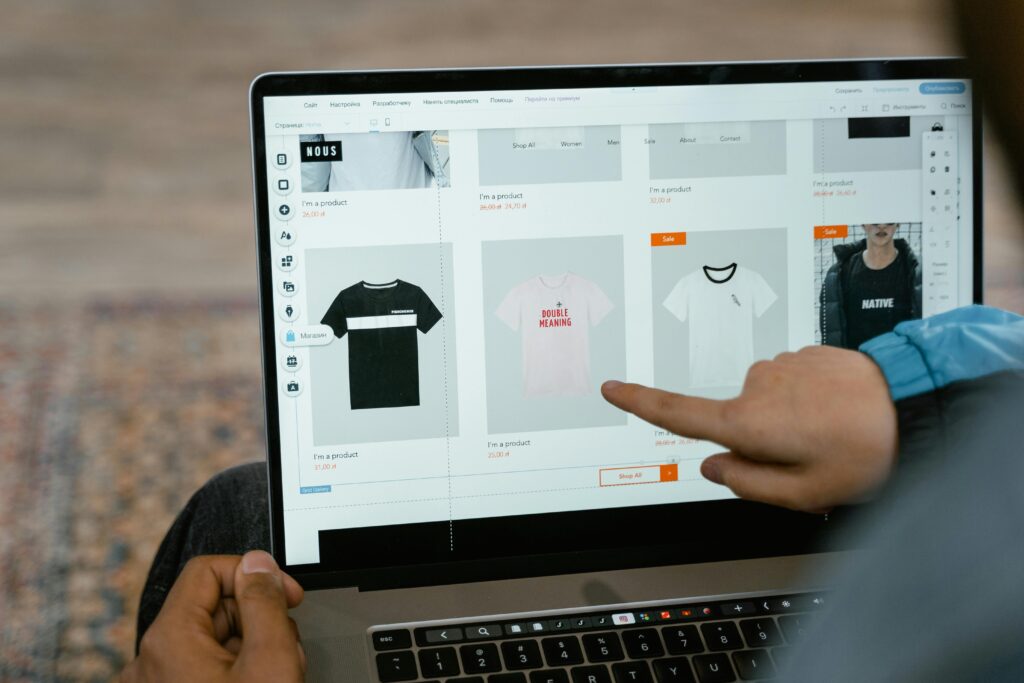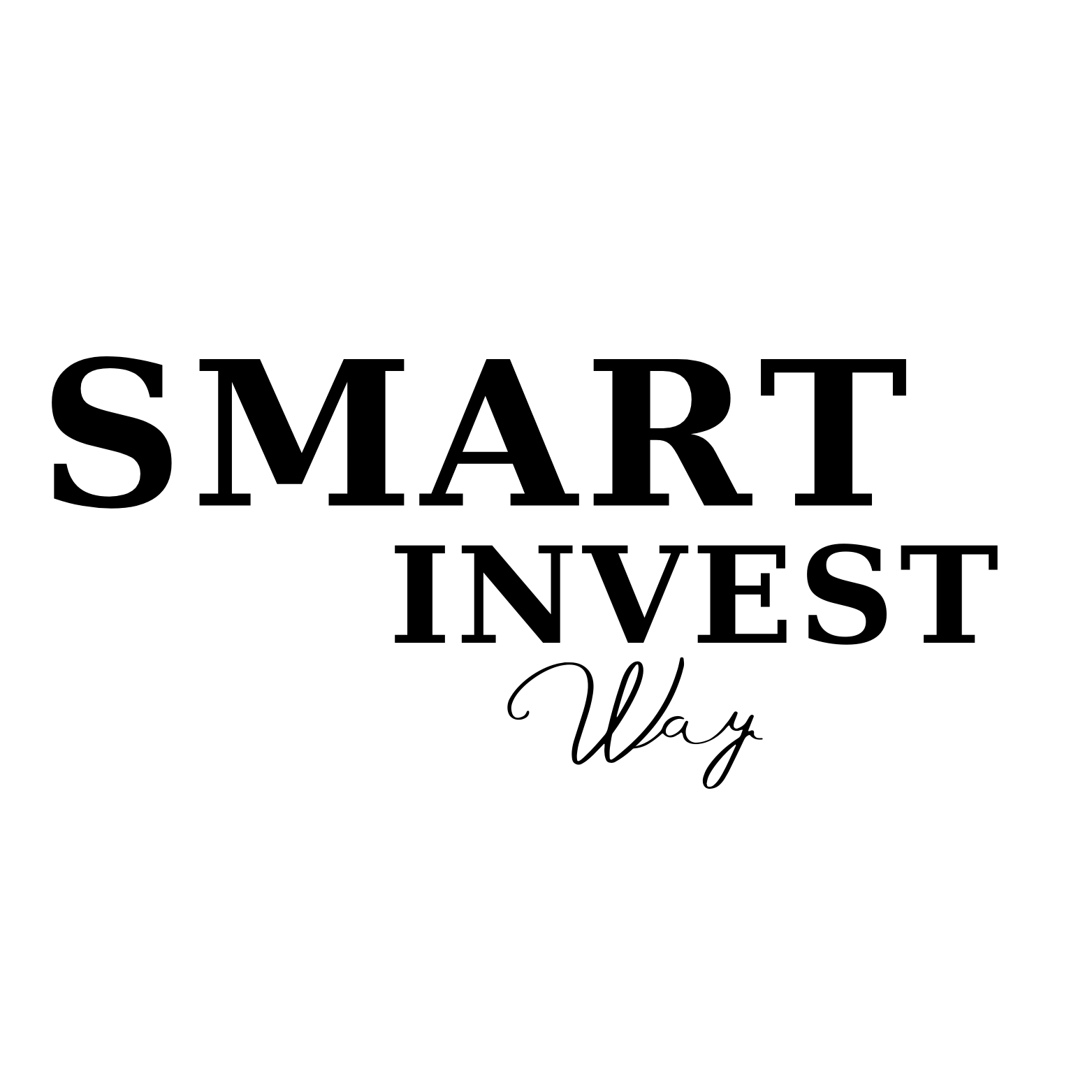Are you looking to boost your income or start a side hustle that could potentially grow into something bigger? You’re in the right place. As someone who’s spent over a decade helping entrepreneurs find their perfect product market fit, I’ve compiled this comprehensive guide to the most profitable things to sell to make money in today’s market.
This isn’t just another generic list—we’ll cover everything from handmade crafts to digital products, complete with realistic profit potential, startup costs, and the skills you’ll need to succeed. Whether you have $0 or $1,000 to invest, there’s something here for you.
Table of Content
Table of Contents
Quick Overview of What We’ll Cover:
- Handmade & craft items
- Print-on-demand products
- Digital downloads & assets
- Flipping & reselling opportunities
- Service packages
- Low-investment starter options
- Specialty food items
- Curated subscription boxes
How to Choose What’s Right for YOU
Before diving into our extensive list of things to sell to make money, let’s establish a framework to help you identify which opportunities align best with your unique situation.
Assessing Your Skills & Interests
The most sustainable business ventures build on what you already know and love. Ask yourself:
- What skills do you already possess?
- What activities do you enjoy doing for hours without noticing the time?
- What subjects do you find yourself researching for fun?
The sweet spot lies where your skills, interests, and market demand intersect. A product you’re passionate about will keep you motivated through inevitable challenges.
Understanding Startup Costs & Budget
Be honest about your financial situation. Different products require different initial investments:
- Zero-cost options: Digital designs, services, or selling items you already own
- Low-cost options ($50-250): Basic crafting supplies, print-on-demand, basic reselling
- Medium investment ($250-1,000): Higher quality equipment, inventory, better tools
- Higher investment ($1,000+): Professional equipment, substantial inventory, custom manufacturing
Don’t stretch yourself too thin financially—start where you are, and reinvest profits to scale up.
Gauging Time Commitment
Consider how much time you can realistically dedicate:
- A few hours weekly: Focus on passive income streams like digital products or print-on-demand
- Part-time (10-20 hours): Handmade items, moderate reselling, packaged services
- Full-time: More labor-intensive products, larger inventory management, multiple product lines
Be realistic—overcommitting leads to burnout and poor quality.
Researching Market Demand & Profitability
Before investing time and money, validate that people actually want what you plan to sell:
- Use Google Trends to track interest over time
- Search Etsy and sort listings by “Most Sales” to see what’s moving
- Check bestseller lists on Amazon, eBay, or Shopify stores in your niche
- Analyze social media engagement around similar products
- Study competitor pricing, reviews, and customer feedback
Pro tip: Look for products with steady demand rather than fad items that might quickly fade.
Quick Decision Checklist:
- [ ] I have the necessary skills or am willing to learn them
- [ ] The startup costs fit my current budget
- [ ] I can commit sufficient time to make this successful
- [ ] I’ve verified there’s market demand for this product
- [ ] The potential profit margins make sense for my goals
Categorized List of Things to Sell to Make Money
Now let’s explore the specific items you can sell, organized by category and with all the details you need to get started.
Handmade & Crafts

1. Handmade Jewelry
Description: Unique, handcrafted necklaces, bracelets, earrings, and rings.
Profit Potential: Medium to High ($15-100+ per piece)
Startup Costs: $$-$$$ ($100-500 for basic supplies)
Effort/Difficulty: Medium (crafting skills required)
Key Skills Needed: Design sense, attention to detail, basic jewelry-making techniques
Popular Platforms: Etsy, Shopify, craft fairs, Instagram
Pro Tip: Focus on a specific niche like minimalist designs, personalized pieces, or sustainable materials to stand out in a crowded market.
2. Handcrafted Candles
Description: Custom scented, decorative, or themed candles.
Profit Potential: Medium ($10-30 per candle)
Startup Costs: $$ ($150-300 for supplies)
Effort/Difficulty: Easy to Medium
Key Skills Needed: Basic crafting, scent pairing knowledge, safety awareness
Popular Platforms: Etsy, local markets, own website, gift shops
Pro Tip: Seasonal scents and gift-ready packaging can dramatically increase sales during holiday periods.
3. Handmade Soap & Bath Products
Description: Natural soaps, bath bombs, scrubs, and bath salts.
Profit Potential: Medium ($5-15 per item)
Startup Costs: $$ ($200-400)
Effort/Difficulty: Medium
Key Skills Needed: Chemistry knowledge, safety protocols, creativity
Popular Platforms: Etsy, farmers markets, Shopify, craft fairs
Pro Tip: Create sample packs or gift sets to increase average order value and introduce customers to multiple products.
4. Art Prints & Original Artwork
Description: Original paintings, illustrations, or reproductions as prints.
Profit Potential: Medium to Very High ($20-1,000+)
Startup Costs: $ to $$$ (depends on materials and printing)
Effort/Difficulty: Medium to High (artistic skill required)
Key Skills Needed: Artistic ability, digital skills for prints, photography
Popular Platforms: Etsy, Society6, own website, art fairs, Instagram
Pro Tip: Offer multiple size options for prints and consider open edition prints to maximize passive income from a single artwork.
5. Custom Pottery & Ceramics
Description: Handmade mugs, bowls, plates, planters, and decorative pieces.
Profit Potential: Medium to High ($20-200+ per piece)
Startup Costs: $$$$ ($1,000+ for wheel, kiln, materials)
Effort/Difficulty: High (specialized skills and equipment)
Key Skills Needed: Pottery techniques, glazing knowledge, kiln operation
Popular Platforms: Etsy, craft shows, Instagram, own website
Pro Tip: Create consistent, branded collections that work together rather than random one-off pieces.
6. Woodworking Items
Description: Cutting boards, furniture, home decor, toys, utensils.
Profit Potential: Medium to Very High ($30-1,000+)
Startup Costs: $$$ to $$$$ ($500-2,000+ for tools)
Effort/Difficulty: Medium to High
Key Skills Needed: Woodworking techniques, tool proficiency, design
Popular Platforms: Etsy, craft fairs, custom orders, Shopify
Pro Tip: Start with smaller items like cutting boards or coasters before moving to furniture to build skills and minimize material waste.
7. Knitted or Crocheted Items
Description: Scarves, hats, blankets, amigurumi toys, home decor.
Profit Potential: Low to Medium ($20-150 per item)
Startup Costs: $ ($50-100 for initial supplies)
Effort/Difficulty: Medium (time-intensive)
Key Skills Needed: Knitting/crocheting techniques, pattern reading/creation
Popular Platforms: Etsy, craft fairs, Instagram, local boutiques
Pro Tip: Focus on patterns/designs you can’t easily find in stores, and consider selling your patterns as digital downloads for passive income.
8. Personalized Gifts
Description: Custom-engraved items, monogrammed products, personalized keepsakes.
Profit Potential: Medium to High ($15-100+)
Startup Costs: $$ to $$$ ($300-1,000 depending on equipment)
Effort/Difficulty: Medium
Key Skills Needed: Design skills, equipment operation, customization techniques
Popular Platforms: Etsy, Shopify, gift-oriented marketplaces
Pro Tip: Offer rush services at premium prices for last-minute shoppers, especially around holidays.
Print-on-Demand (POD)

9. Custom T-shirts & Apparel
Description: Shirts, hoodies, and other clothing with your unique designs.
Profit Potential: Low to Medium ($5-15 per item)
Startup Costs: $ (mainly design software)
Effort/Difficulty: Easy (once designs are created)
Key Skills Needed: Graphic design, niche research, marketing
Popular Platforms: Printify, Printful, Redbubble, Etsy, Shopify, TeeSpring
Pro Tip: Create designs for specific niches with passionate fans (professions, hobbies, causes) rather than generic designs with broad appeal but high competition.
10. Custom Mugs & Drinkware
Description: Coffee mugs, water bottles, tumblers with your designs.
Profit Potential: Low to Medium ($3-10 per item)
Startup Costs: $ (design software only)
Effort/Difficulty: Easy
Key Skills Needed: Graphic design, marketing
Popular Platforms: Printful, Printify, Etsy, own Shopify store
Pro Tip: Create cohesive sets or collections that encourage multiple purchases rather than single items.
11. Wall Art & Posters
Description: Art prints, motivational posters, maps, and decorative designs.
Profit Potential: Medium ($10-30 per item)
Startup Costs: $ (design tools)
Effort/Difficulty: Easy to Medium
Key Skills Needed: Graphic design or illustration, trend awareness
Popular Platforms: Society6, Redbubble, Etsy, own website
Pro Tip: Create designs that work in multiple coordinating pieces to encourage set purchases for gallery walls.
12. Phone Cases & Tech Accessories
Description: Custom-designed phone cases, laptop sleeves, AirPods cases.
Profit Potential: Low to Medium ($5-15 per item)
Startup Costs: $ (design software)
Effort/Difficulty: Easy
Key Skills Needed: Graphic design, trend research
Popular Platforms: Printify, Printful, Redbubble, Etsy
Pro Tip: Stay current with new device releases and be among the first to offer cases for the latest models.
13. Tote Bags & Accessories
Description: Shopping bags, backpacks, makeup bags with your designs.
Profit Potential: Low to Medium ($5-15 per item)
Startup Costs: $ (design software)
Effort/Difficulty: Easy
Key Skills Needed: Graphic design, marketing
Popular Platforms: Printful, Printify, Redbubble, own site
Pro Tip: Target specific niches like teachers, booklovers, or eco-conscious consumers with tailored designs.
14. Custom Stickers & Decals
Description: Vinyl stickers, laptop decals, car stickers, window clings.
Profit Potential: Low to Medium ($2-8 per sticker)
Startup Costs: $ to $$ ($100-300 for at-home production)
Effort/Difficulty: Easy
Key Skills Needed: Graphic design, illustration
Popular Platforms: Etsy, Redbubble, StickersApp, own website
Pro Tip: Create sticker packs or bundles to increase average order value, and consider die-cut designs for premium appeal.
Digital Products

15. Ebooks & Digital Guides
Description: Instructional guides, fiction, cookbooks, workbooks in PDF format.
Profit Potential: Medium to High ($5-50 per download, unlimited sales)
Startup Costs: $ (writing/design software)
Effort/Difficulty: Medium (content creation)
Key Skills Needed: Writing, subject expertise, basic design
Popular Platforms: Gumroad, Etsy, own website, Amazon Kindle
Pro Tip: Start with a free “lite” version to build your email list, then sell the comprehensive version to your audience.
16. Printable Planners & Organizational Tools
Description: Budgeting templates, meal planners, calendars, trackers.
Profit Potential: Medium to High ($5-30 per download, unlimited sales)
Startup Costs: $ (design software)
Effort/Difficulty: Medium
Key Skills Needed: Graphic design, organization systems knowledge
Popular Platforms: Etsy, own website, Gumroad, Creative Market
Pro Tip: Create both dated and undated versions of planners to extend the shelf life of your products.
17. Resume Templates & Business Documents
Description: Professional resume designs, business plan templates, proposal documents.
Profit Potential: Medium to High ($5-50 per download)
Startup Costs: $ (design software)
Effort/Difficulty: Medium
Key Skills Needed: Graphic design, business document knowledge
Popular Platforms: Etsy, Creative Market, own website
Pro Tip: Create industry-specific resume templates that address the unique needs of different professions.
18. Stock Photos & Graphics
Description: Original photography, illustrations, or digital assets for commercial use.
Profit Potential: Low to Medium (volume-based, $0.25-$10 per download)
Startup Costs: $$ (quality camera or design software)
Effort/Difficulty: Medium
Key Skills Needed: Photography or illustration, editing, keywording
Popular Platforms: Shutterstock, Adobe Stock, Etsy, own website
Pro Tip: Create themed collections or mock-ups that solve specific problems for marketers, bloggers, or small businesses.
19. Online Courses & Tutorials
Description: Structured learning materials on specialized topics.
Profit Potential: High to Very High ($50-500+ per enrollment)
Startup Costs: $$ (recording equipment, platform fees)
Effort/Difficulty: High (comprehensive content creation)
Key Skills Needed: Subject expertise, teaching ability, video production
Popular Platforms: Teachable, Thinkific, Udemy, own website
Pro Tip: Pre-sell your course with a discount to validate demand and get feedback before creating all content.
20. Digital Art & Design Assets
Description: Fonts, brushes, textures, patterns, illustrations, 3D models.
Profit Potential: Medium ($5-30 per download, volume sales)
Startup Costs: $ to $$ (design software)
Effort/Difficulty: Medium to High
Key Skills Needed: Specialized design skills
Popular Platforms: Creative Market, Design Cuts, Etsy, own website
Pro Tip: Create asset bundles with cohesive themes to increase perceived value and price point.
Flipping & Reselling

21. Vintage Clothing & Accessories
Description: Curated secondhand clothing with focus on specific eras or styles.
Profit Potential: Medium to High ($10-100+ profit per item)
Startup Costs: $$ ($200-500 initial inventory)
Effort/Difficulty: Medium (sourcing required)
Key Skills Needed: Fashion knowledge, authentication, condition assessment
Popular Platforms: Depop, Poshmark, Etsy Vintage, Instagram
Pro Tip: Develop expertise in authenticating designer items to command higher prices and build customer trust.
22. Refurbished Furniture
Description: Updated, repaired, or upcycled furniture pieces.
Profit Potential: Medium to High ($50-500+ per piece)
Startup Costs: $$ to $$$ ($200-1,000 for tools and initial inventory)
Effort/Difficulty: Medium to High
Key Skills Needed: Furniture repair, painting/finishing, design sense
Popular Platforms: Facebook Marketplace, local pick-up, Etsy, own website
Pro Tip: Focus on solid wood pieces that can be transformed with paint or refinishing rather than particleboard items.
23. Electronics & Gadgets
Description: Refurbished phones, computers, gaming systems, cameras.
Profit Potential: Medium to High ($50-300+ per item)
Startup Costs: $$$ ($500-2,000 for inventory and testing equipment)
Effort/Difficulty: Medium to High (technical knowledge required)
Key Skills Needed: Electronics repair, testing protocols, market knowledge
Popular Platforms: eBay, Amazon, own website
Pro Tip: Specialize in one category (e.g., DSLR cameras or gaming consoles) to develop expertise and efficient repair processes.
24. Books & Media
Description: Used books, vinyl records, vintage magazines, comics.
Profit Potential: Low to Medium ($2-50+ per item)
Startup Costs: $ to $$ ($100-500 for initial inventory)
Effort/Difficulty: Easy to Medium
Key Skills Needed: Condition grading, value assessment, niche knowledge
Popular Platforms: Amazon, eBay, Discogs, AbeBooks
Pro Tip: Focus on collectible niches rather than common titles, and learn to identify first editions and valuable prints.
25. Collectibles & Memorabilia
Description: Trading cards, action figures, sports memorabilia, vintage toys.
Profit Potential: Medium to Very High ($10-1,000+ per item)
Startup Costs: $$ to $$$ ($300-2,000 for inventory)
Effort/Difficulty: Medium to High
Key Skills Needed: Authentication, condition grading, market knowledge
Popular Platforms: eBay, specialty forums, collector sites
Pro Tip: Stay informed about upcoming anniversaries of popular franchises that might spike interest in related collectibles.
Services as Products

26. Social Media Audit Packages
Description: Pre-packaged social media account analysis with recommendations.
Profit Potential: Medium to High ($100-500 per package)
Startup Costs: $ (mostly time investment)
Effort/Difficulty: Medium (expertise required)
Key Skills Needed: Social media marketing knowledge, analytics
Popular Platforms: Own website, Fiverr Pro, Upwork
Pro Tip: Create tiered packages (Basic, Standard, Premium) with clear deliverables for each level.
27. Website Check-Up Bundles
Description: Pre-defined website analysis covering SEO, design, and functionality.
Profit Potential: Medium to High ($150-1,000 per package)
Startup Costs: $ (time investment, analysis tools)
Effort/Difficulty: Medium to High (technical knowledge required)
Key Skills Needed: SEO, web design, UX principles
Popular Platforms: Own website, specialized marketplaces
Pro Tip: Include a brief video walkthrough of your findings alongside the written report to add perceived value.
28. Logo Design Packages
Description: Fixed-scope logo design services with clear deliverables.
Profit Potential: Medium to High ($200-1,000+ per package)
Startup Costs: $ to $$ (design software)
Effort/Difficulty: Medium to High (design skills required)
Key Skills Needed: Graphic design, branding knowledge, client communication
Popular Platforms: Own website, Fiverr, 99designs
Pro Tip: Include a brand style guide as part of premium packages to increase value and help clients implement their new logo consistently.
29. Content Creation Packages
Description: Pre-defined bundles of blog posts, social media content, or email newsletters.
Profit Potential: Medium to High ($200-2,000 per package)
Startup Costs: $ (writing tools)
Effort/Difficulty: Medium (writing/creation skills)
Key Skills Needed: Writing, SEO knowledge, content strategy
Popular Platforms: Own website, specialized job boards
Pro Tip: Create industry-specific packages that address common content needs in those sectors (e.g., real estate, health, finance).
Low-Cost / Low-Effort Starters

30. Used Items from Your Home
Description: Decluttering your own possessions for profit.
Profit Potential: Low to Medium (varies widely)
Startup Costs: $ (essentially zero)
Effort/Difficulty: Easy
Key Skills Needed: Basic photography, description writing
Popular Platforms: eBay, Facebook Marketplace, Poshmark, local selling apps
Pro Tip: Clean and stage items properly before photographing, and research comparable sold items to price competitively.
31. Print-on-Demand Mini Collections
Description: Small collections of 3-5 designs across multiple products.
Profit Potential: Low to Medium ($3-10 per item)
Startup Costs: $ (design tools)
Effort/Difficulty: Easy
Key Skills Needed: Basic design, niche research
Popular Platforms: Printful + Etsy, Redbubble, TeeSpring
Pro Tip: Test designs with minimal products first, then expand successful designs across more product types.
32. Digital Templates (Basic)
Description: Simple digital downloads like checklists, trackers, or basic planners.
Profit Potential: Low to Medium ($3-15 per download)
Startup Costs: $ (design software)
Effort/Difficulty: Easy to Medium
Key Skills Needed: Basic design, organization
Popular Platforms: Etsy, own website
Pro Tip: Start with solving one specific problem really well rather than creating multiple mediocre products.
33. Stock Photo Contributions
Description: Contributing photos to stock photography sites.
Profit Potential: Low ($0.25-5 per download, passive)
Startup Costs: $ to $$ (depends on existing camera equipment)
Effort/Difficulty: Easy to Medium
Key Skills Needed: Basic photography, keywording
Popular Platforms: Shutterstock, Adobe Stock, iStock
Pro Tip: Focus on in-demand niches like authentic lifestyle images, diverse representations, or business concepts.
Food Items

34. Baked Goods (Local)
Description: Homemade cookies, cakes, bread, pastries (check local cottage food laws).
Profit Potential: Low to Medium ($10-50+ per order)
Startup Costs: $ to $$ ($100-300 for supplies and packaging)
Effort/Difficulty: Medium (baking skills required)
Key Skills Needed: Baking, food safety knowledge, presentation
Popular Platforms: Local markets, Facebook, Instagram, word-of-mouth
Pro Tip: Create signature items that aren’t readily available locally, and consider dietary niches like gluten-free or vegan.
35. Specialty Food Items
Description: Jams, pickles, sauces, spice blends (subject to regulations).
Profit Potential: Low to Medium ($5-20 per item)
Startup Costs: $$ ($200-500 for supplies, packaging, permits)
Effort/Difficulty: Medium
Key Skills Needed: Cooking skills, food safety knowledge, preservation techniques
Popular Platforms: Farmers markets, local shops, food festivals, own website
Pro Tip: Create seasonal limited editions to drive urgency and repeat purchases throughout the year.
Subscription Boxes

36. Curated Subscription Boxes
Description: Monthly boxes of curated items around a specific theme or interest.
Profit Potential: Medium to High ($10-50 profit per box, recurring)
Startup Costs: $$$ ($1,000+ for initial inventory)
Effort/Difficulty: High (logistics, curation, fulfillment)
Key Skills Needed: Sourcing, curation, logistics management
Popular Platforms: Own website, Cratejoy, social media marketing
Pro Tip: Start with a pre-order or limited release to test the concept before investing heavily in inventory.
Setting Up Your Sales Channel
Choosing the right platform to sell your items is crucial for success. Here’s a quick comparison of the most popular options for selling online in 2025:
| Platform | Pros | Cons | Best For |
|---|---|---|---|
| Etsy | Built-in audience, easy setup, good for handmade | Fees, competition, limited control | Craft, vintage, digital downloads |
| Shopify | Complete control, professional look, scalable | Monthly fee, marketing required | Established sellers, brand building |
| Amazon | Massive audience, fulfillment services | High fees, strict rules, competition | High-volume products, retail arbitrage |
| eBay | Good for used/unique items, auction option | Fees, buyer bias, competition | Used items, collectibles, electronics |
| Social Media | Direct connection, low/no fees | Limited features, platform changes | Building audience, supplemental sales |
| Local Markets | Personal connection, immediate cash | Time intensive, weather dependent | Food items, crafts, community building |
When choosing your platform, consider:
- Your technical comfort level
- Time available for marketing
- Fee structures and profitability
- Your target customer’s shopping habits
- Long-term scalability goals
Many successful sellers use multiple platforms strategically—perhaps Etsy for handmade items while building their own Shopify store, or Amazon for broad reach while nurturing direct sales through Instagram.
Essential Tips for Success
Product Photography Basics
Even the most amazing products won’t sell with poor images. You don’t need expensive equipment:
- Use natural lighting whenever possible
- Create a simple DIY lightbox for small items
- Maintain consistent backgrounds and styling
- Show scale, details, and multiple angles
- Include lifestyle images showing the product in use
- Edit for consistent brightness and color accuracy
Simple Pricing Strategies
Profitable pricing requires strategy:
- Calculate ALL costs (materials, labor, fees, shipping supplies, taxes)
- Research competitor pricing for similar quality items
- Consider psychological pricing ($19.99 vs $20.00)
- Don’t undervalue your work—especially handmade items
- Test different price points to find optimal conversion
- Build in enough margin to offer occasional discounts
Basic Marketing & Promotion
Getting eyes on your products:
- Optimize listings with relevant keywords
- Create a consistent posting schedule on social media
- Use high-quality images and engaging descriptions
- Offer limited-time promotions to create urgency
- Consider low-cost advertising on platforms where your audience spends time
- Encourage reviews and testimonials from satisfied customers
- Build an email list from day one
Customer Service Importance
Happy customers become repeat buyers and ambassadors:
- Respond to inquiries promptly and professionally
- Set clear expectations about processing/shipping times
- Package products thoughtfully and securely
- Include a personal note or small extra with orders
- Have a clear, fair return policy
- Follow up after purchase to ensure satisfaction
Avoiding Common Pitfalls
Many new sellers stumble in predictable ways. Here’s how to avoid the most common mistakes:
Underpricing
Charging too little is the fastest path to burnout. Remember:
- Your time has value—track and pay yourself hourly
- Low prices attract price-sensitive customers who may demand more
- Starting low makes raising prices difficult later
- Competing on price alone is rarely sustainable for small sellers
Ignoring Market Research
Don’t create in a vacuum:
- Validate demand before investing heavily
- Study successful competitors to understand market expectations
- Seek honest feedback from target customers
- Test small batches before scaling production
- Stay informed about trends in your niche
Poor Quality Imagery
Many sales are lost due to subpar photos:
- Invest time in learning basic photography techniques
- Edit photos for consistent styling and accuracy
- Update images if your product evolves
- Show your products in the best possible light
Not Understanding Shipping/Logistics
Shipping surprises can eliminate profits:
- Weight and measure everything accurately
- Factor packaging materials into costs
- Research shipping options for best rates
- Be clear about processing times and delivery estimates
- Have a strategy for damaged items or lost packages
Conclusion
The opportunity to make money by selling products—whether physical or digital—has never been more accessible. The key is finding the right match between your skills, interests, resources, and market demand.
Start small, test ideas, and be willing to pivot if something isn’t working. Many successful sellers began with one product type and evolved as they learned more about their customers and capabilities.
Remember that consistency matters more than perfection. The sellers who succeed long-term are those who show up daily, continually improve their offerings, and genuinely care about solving problems for their customers.
Which of these ideas resonates most with you? Start there, but don’t be afraid to experiment. Your perfect product might be a combination of ideas or something that evolves as you gain experience in the marketplace.
Ready to take the next step? Download our free Product Selection Worksheet to evaluate your top three ideas against important success factors.
FAQ: Things to Sell to Make Money
What handmade items sell best online? Personalized jewelry, custom home decor, and unique gifts consistently perform well. Items that solve specific problems or commemorate special occasions tend to command higher prices and face less competition than generic crafts.
Is print-on-demand still profitable in 2025? Yes, but success requires niche targeting and quality designs. Generic t-shirts face intense competition, but specialized designs for specific audiences (professions, hobbies, life events) still perform well with minimal upfront investment.
How much money can you make selling digital products? Income varies widely, from a few hundred dollars monthly to six-figure businesses. The key advantage is scalability—you create once and sell infinitely with minimal ongoing costs. Many successful creators earn $2,000-5,000 monthly from a portfolio of digital products.
What’s the easiest thing to make and sell for beginners? Digital downloads (like simple printables), print-on-demand products, and curated reselling offer the lowest barriers to entry. These require minimal upfront investment and can be started while maintaining a full-time job.
Do I need a business license to sell things online? Requirements vary by location and what you’re selling. Many jurisdictions allow small-scale selling as a sole proprietor without formal registration, but as you grow, you’ll likely need proper business registration, tax collection, and possibly industry-specific permits (especially for food items).
What sells well on Shopify versus Etsy? Etsy excels for handmade, vintage, and unique items where customers specifically seek artisanal quality. Shopify works better for building your own brand, scaling with multiple product lines, or selling products that don’t fit Etsy’s handmade/vintage categories.
How do I know if my product idea will sell? Look for these indicators: similar items have consistent sales on platforms like Etsy or Amazon, relevant hashtags show engagement on social media, search volume exists for related terms, and you can identify clear target customer groups who need what you’re offering.
What’s more profitable—physical or digital products? Digital products typically offer higher profit margins (often 90%+ versus 40-60% for physical goods) and eliminate inventory and shipping concerns. However, physical products can command higher price points and may face less competition in certain niches.




